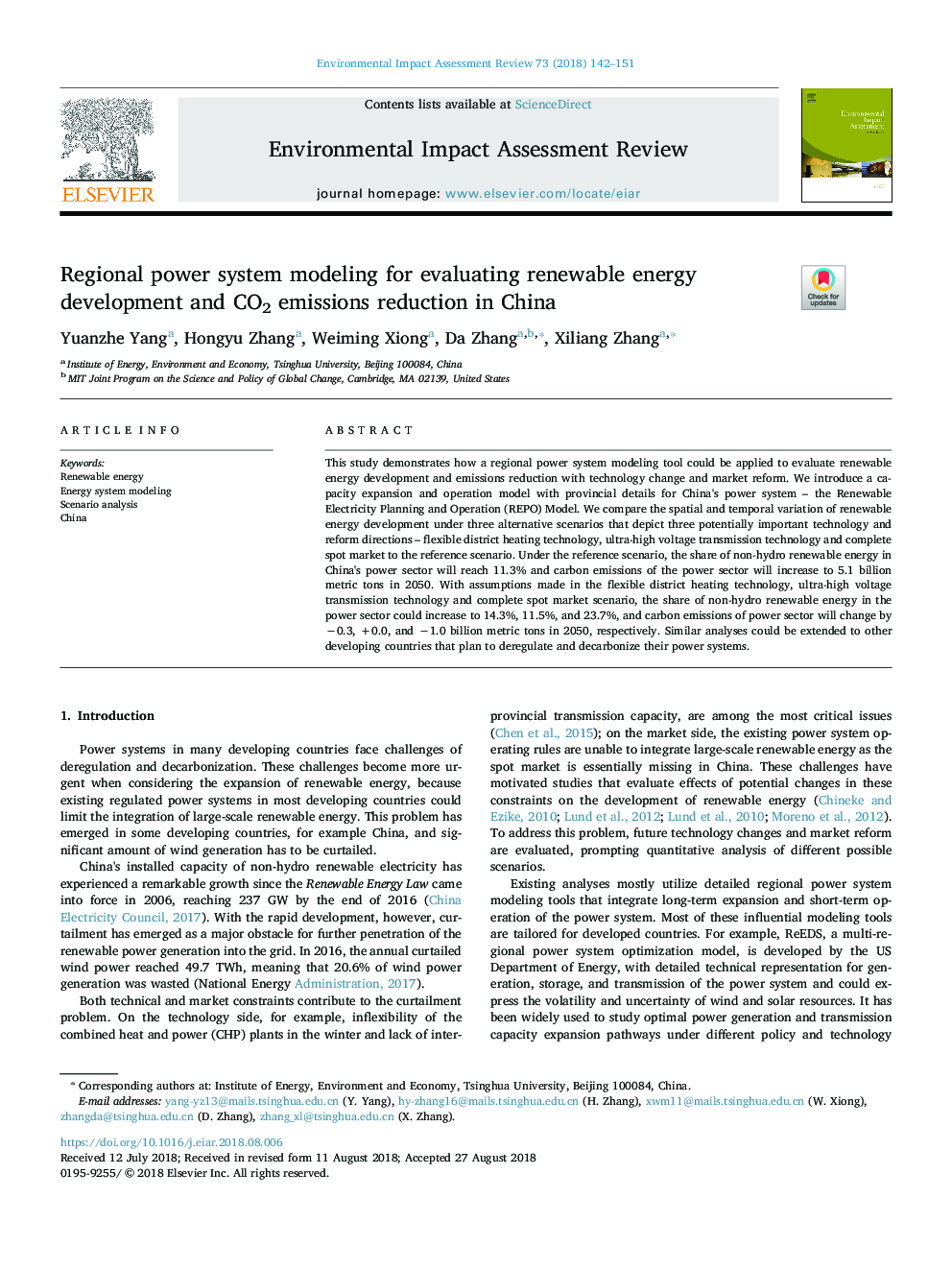| Article ID | Journal | Published Year | Pages | File Type |
|---|---|---|---|---|
| 11005259 | Environmental Impact Assessment Review | 2018 | 10 Pages |
Abstract
This study demonstrates how a regional power system modeling tool could be applied to evaluate renewable energy development and emissions reduction with technology change and market reform. We introduce a capacity expansion and operation model with provincial details for China's power system - the Renewable Electricity Planning and Operation (REPO) Model. We compare the spatial and temporal variation of renewable energy development under three alternative scenarios that depict three potentially important technology and reform directions - flexible district heating technology, ultra-high voltage transmission technology and complete spot market to the reference scenario. Under the reference scenario, the share of non-hydro renewable energy in China's power sector will reach 11.3% and carbon emissions of the power sector will increase to 5.1 billion metric tons in 2050. With assumptions made in the flexible district heating technology, ultra-high voltage transmission technology and complete spot market scenario, the share of non-hydro renewable energy in the power sector could increase to 14.3%, 11.5%, and 23.7%, and carbon emissions of power sector will change by â0.3, +0.0, and â1.0 billion metric tons in 2050, respectively. Similar analyses could be extended to other developing countries that plan to deregulate and decarbonize their power systems.
Related Topics
Physical Sciences and Engineering
Energy
Renewable Energy, Sustainability and the Environment
Authors
Yuanzhe Yang, Hongyu Zhang, Weiming Xiong, Da Zhang, Xiliang Zhang,
